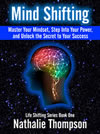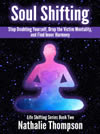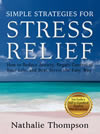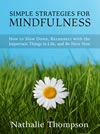 Last week, I wrote about how your opinion of the world around you actually creates your experience of the world. In essence, your attitude, beliefs, and expectations about the world shape the version of the world that you are living. Believe that the world is a horrible place and everything sucks, and it will be. Believe that the world is a wonderful place and people are awesome, and that’s what you will experience.
Last week, I wrote about how your opinion of the world around you actually creates your experience of the world. In essence, your attitude, beliefs, and expectations about the world shape the version of the world that you are living. Believe that the world is a horrible place and everything sucks, and it will be. Believe that the world is a wonderful place and people are awesome, and that’s what you will experience.
In that article, I suggested that, if you’re going to be shaping the world anyway, that it would be helpful to you to stop doing it automatically and start deliberately creating the kind of world that you want to experience, instead.
But how do you do that? How do you make that shift? Today I’ve got 5 simple strategies to help you learn how to change the way you look at things, so that the things you look at change.
Strategy #1: Practice Mindfulness
Mindfulness helps you to understand that your thoughts and your feeling are very fluid and that they change constantly. You realize that there is a higher awareness – a greater You – that exists independently of your thoughts, observing them as they flow through you. When you really start to understand and become aware of this, you‘re better able to cope with difficulty because you know that any negative thoughts and feelings you have surrounding your situation are changeable.
Realizing that there is a greater YOU observing your thoughts increases resiliency. #mindfulness Click To TweetStrategy #2: Practice Optimism
Optimism helps to buffer you against the difficulties in life. It’s the practice of looking for the positive in any situation – finding the silver lining, even when your skies are gray. Optimism isn’t foolish or childish, it’s a resiliency technique that can help you weather even the darkest times, and it brings with it on of the most powerful weapons of all: hope. Pessimists like to complain about things, but they don’t tend to try and do anything about those situations. Optimists believe that things can change and they actively find solutions to make things better.
Strategy #3: Practice Gratitude
You’ve heard this over and over and over again, from everyone who works in the personal development field. And there is a reason for that – it works! Gratitude is probably the most powerful practice that you can use to shift your experience of the world. By now, most people are aware of this. But, sadly, most people never bother implementing it because it seems too simple. The thing with gratitude though, is that appreciation for what you already have in life is what gets you into alignment with having more in life to be grateful for.
Don't dismiss #gratitude as 'too simple' to work; it's a powerful life-altering practice! Click To TweetStrategy #4: Practice Connection
Actively seek the company of other people who already embody the kind of mindset, personality and actions that you wish you could. Attitudes are contagious; the people we surround ourselves with and spend the most time with affect our moods, our perspectives and actions. If you’re constantly bombarded by negativity via other people’s comments and actions, it will start to rub off on you. Making sure that the attitudes and perspectives of those around us are in harmony with the kind of life that we want to create is important to being able to make it happen.
Strategy #5: Giving
This is not necessarily about giving money or stuff. It’s about giving out whatever it is that you want to see more of in your world, whether it’s kindness, creativity, joy, peace, or anything else. We are all connected, all part of one energy field. Our thoughts and actions send ripples outward through this field and affect every other part of it. By giving out what you want to see more of, you are adding to the power of that which you want in the field. As Mahatma Gandhi once said: “Be the change you wish to see in the world.”
So there you have it. Five strategies to help you learn how to change the way you look at things, so that the things you look at start changing. Use these strategies to help you shift from creating your world on default, to creating exactly the kind of world that you most want to experience.
photo credit: pixabay.com cc (modified by me)

















